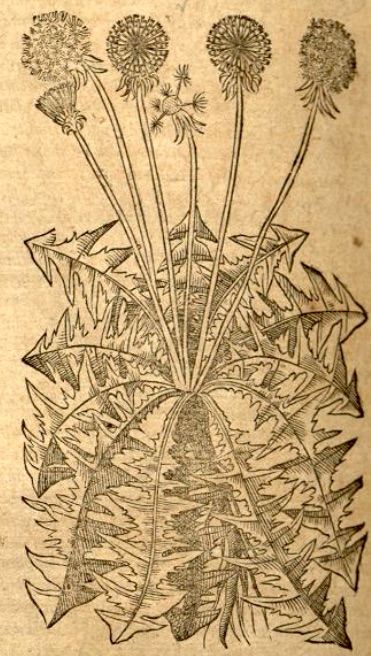
Fresh, young dandelion leaves are delicious in salad and it sometimes seems as though other people are re-discovering the simple beauty of the dandelion as a healthy vegetable.
The article below was originally published in a newspaper in 1918 and talks about how dandelion leaves were used at that time.

Salad Plants Grow Wild
Foremost among these plants is the dandelion. Its use as a vegetable is so common that it is sold in many city markets, occasionally it is cultivated by market gardeners, but much more frequently the plants sold are wild ones and ought to cost less than cultivated greens. When someone in the family can dig them near home, there can be no doubt as to the economy of using them. If they are taken from the lawn, there is the further advantage of removing a troublesome weed – providing always that the digging is carefully done. Only the dandelion should be pulled, not the grass around it, and the root should be removed, not broken off at the top, else several crowns of leaves may grow in the place of one. As in most stem and leaf vegetables, the texture and flavor are both best when the plants are young.
Growing, as they do, close to the surface of the ground, dandelion greens are likely to be full of earth and grit and must be carefully washed and rinsed in several waters. the water in which they have been rinsed should never be poured out of the pan over the greens, but the greens should be lifted out of the water so that the dirt which has settled to the bottom may not get back on the leaves; and for the same reason the cooked greens should be lifted out of the water in which they are boiled.
The most common way of using dandelions is a potherb or greens. As with most green vegetables, it is a mistake to cook them more than is needed to make them tender. If they are boiled with one-eighth teaspoonful (level) of cooking soda to each quart of greens used, they will keep their color better. Young dandelions may also be used uncooked as salad, a custom less common in this country than in Europe, where the tender plants are sometimes blanched like asparagus. if more dandelions are available, than can be used while they are fresh, they may be preserved for future use. They may be canned by the method used by the canning clubs for spinach, or they may be “put down” in salt according to a household method. In many homes it is a common practice to preserve dandelion greens with salt in stone crocks, putting in first a layer of greens, then a layer of salt, then more greens, and so on, until the crock is filled. the dandelions are then covered with a close fitting plate or board, on which a weight (a clean piece of marble or stone) is placed to keep the greens packed solid.
Other wild plants used as potherbs are curly dock, pigweed or lamb’s quarters, chickweed, mustard shoots, purple milkweed shoots, young horseradish leaves, marsh marigold (sometimes called American cowslip), poke sprouts, pepper cress, purslane or “pusley,” and in the southwestern states some sorts of cactus leaves and stalks.
Source: Ottumwa semi-weekly courier. (Ottumwa, Iowa), 02 April 1918.


